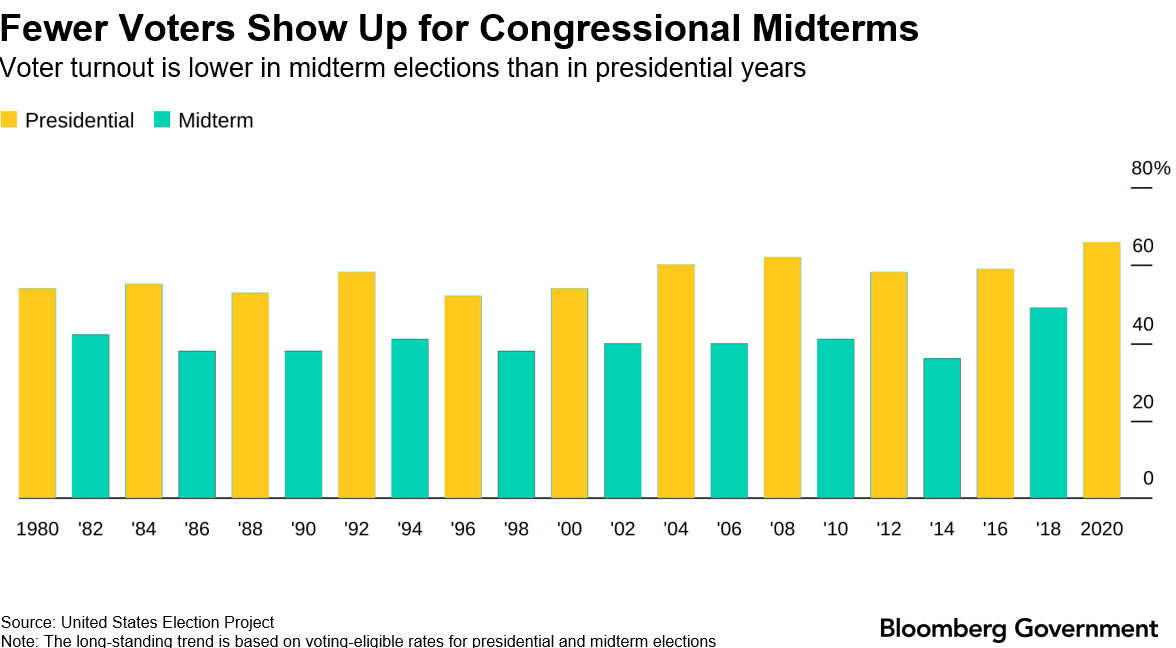ECA midterms analysis - recapping results, implications of elections
The battle for control of Congress rages on as midterm ballots are counted. While the fate of the Senate is uncertain, Republicans are poised to win the House, though by a slimmer margin than expected.
Midterm elections typically hurt the president’s party, which lost ground in the House in 18 of the past 20 midterm elections and in the Senate in 15 of those elections. Midterms also typically see less voter turnout than in presidential years.
NBC News currently projects the Republicans will hold 220 seats in the next Congress, a net gain of 8 seats. At the time of publication, Democrats are set to hold at least 48 Senate seats and Republicans with at least 47 seats, and there are 5 Senate races whose results are not yet determined.
Despite the lower turnout, the outcomes of midterm elections have important implications for the future of the EM program, NNSA, and nuclear policy.
House Appropriations Committee
If the majority changes in the House in January, Rep. Kay Granger (R-TX) is expected to become the next chair of the House Appropriations Committee, while Rep. Rosa DeLauro (D-CT) will serve as the top Democrat.
On the Energy & Water Subcommittee, Rep. Chuck Fleischmann (R-TN) is expected to run for chair if Republicans have the majority.
Senate Appropriations Committee
If Democrats hold the majority in the Senate, Sen. Patty Murray (D-WA) is likely to succeed the retiring Sen. Patrick Leahy (D-VT) as chair of the committee. If Republicans take control, Sen. Susan Collins (R-ME) would become chair, replacing the current top Republican, Sen. Richard Shelby (R-AL), who is also retiring.
On the Energy & Water Subcommittee, Sen. Dianne Feinstein (D-CA) and Sen. John Kennedy (R-LA) are expected to remain the top Democratic and Republican leaders, respectively.
House Armed Services Committee
Even if all of the incumbents return, the HASC will still see considerable turnover; six Democrats are retiring, while three Republicans are leaving Congress. If Republicans take control of the House, Rep. Mike Rogers (R-AL) is set to become chairman, and Rep. Adam Smith (D-WA) would be the top Democrat.
Senate Armed Services Committee
SASC Ranking Member Sen. James Inhofe (R-OK) announced his retirement, effective January 3, 2023. Sen. Roger Wicker (R-MS), the next most senior member on the committee, is likely to become the top Republican, and Sen. Jack Reed (D-RI) would remain the chairman, assuming Democrats retain control of the Senate.
Who will represent energy communities in 2023?
EM sites will be represented by at least two new members of Congress. Congressman-elect Nick Langworthy (R-NY-23) will represent the West Valley Demonstration Site, and Senator-elect JD Vance (R-OH) will represent Portsmouth.
Three races impacting EM sites are still undetermined. Incumbents Rep. Steven Horsford (D-NV-04) and Sen. Catherine Cortez Masto (D-NV) are in close races to continue representing the Nevada National Security Site.
Rep. Yvette Herrell (R-NM-02) is in a too-close-to-call race to represent the WIPP site’s House district.




